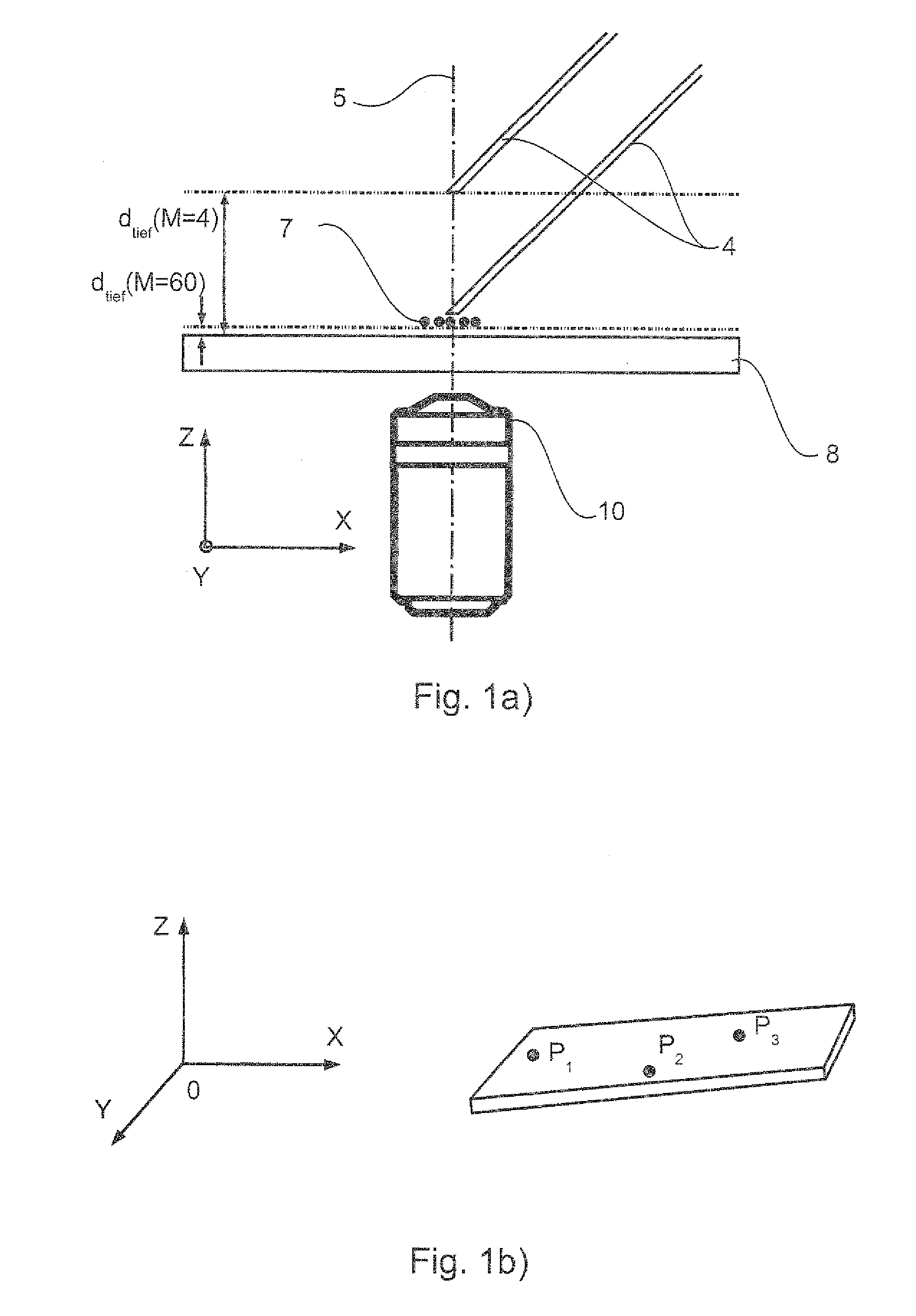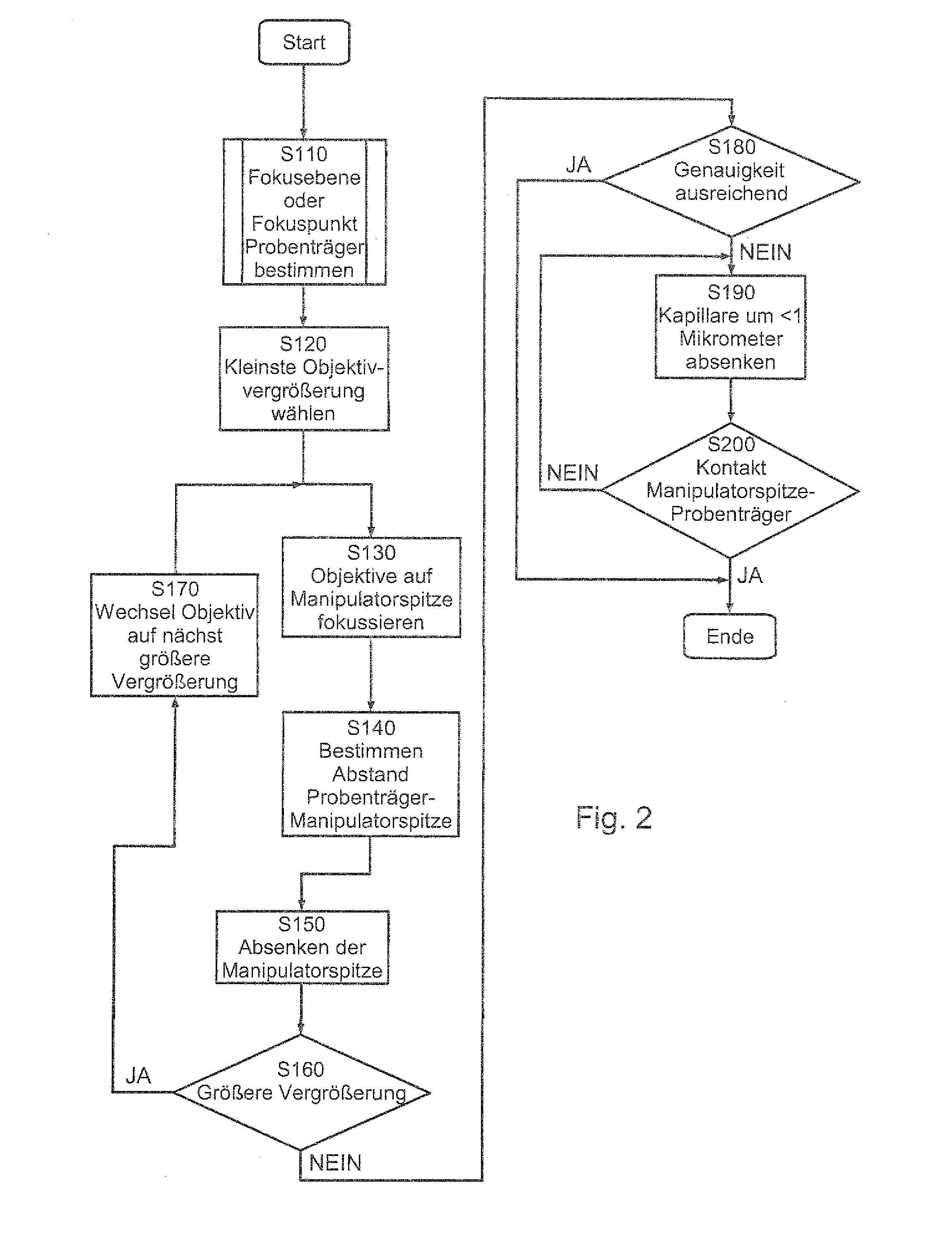Method for the collision-free positioning of a micromanipulator tool
a technology of micromanipulator and tool, which is applied in the direction of material analysis, position/direction control, instruments, etc., can solve the problems of difficult isolation of individual as well as unusual cells from minute samples necessary for genotype and phenotype characterization, and achieves high accuracy in the calibration of the position. , the effect of speeding up the method
- Summary
- Abstract
- Description
- Claims
- Application Information
AI Technical Summary
Benefits of technology
Problems solved by technology
Method used
Image
Examples
Embodiment Construction
[0010]The object of the present invention is accordingly to provide a method for the collision-free positioning of a micromanipulation tool relative to a sample carrier, which permits an accurate and damage-free positioning of the manipulation tool over the whole sample surface in a completely automated manner. This object is achieved by a method having the features of claim 1. Preferred advantageous configurations of the invention are defined in the dependent claims.
[0011]The method according to the invention for the collision-free positioning of a micromanipulation tool relative to a sample carrier with the aid of a microscope comprises the following steps:
a) determining the focal position 4 of at least one point P on the surface of the sample carrier by focusing a first microscope objective with a first numerical aperture NA1 on the at least one point; b) positioning the micromanipulation tool on the optical axis of the microscope; c) determining the focal position ZM of the micr...
PUM
 Login to View More
Login to View More Abstract
Description
Claims
Application Information
 Login to View More
Login to View More - R&D Engineer
- R&D Manager
- IP Professional
- Industry Leading Data Capabilities
- Powerful AI technology
- Patent DNA Extraction
Browse by: Latest US Patents, China's latest patents, Technical Efficacy Thesaurus, Application Domain, Technology Topic, Popular Technical Reports.
© 2024 PatSnap. All rights reserved.Legal|Privacy policy|Modern Slavery Act Transparency Statement|Sitemap|About US| Contact US: help@patsnap.com










